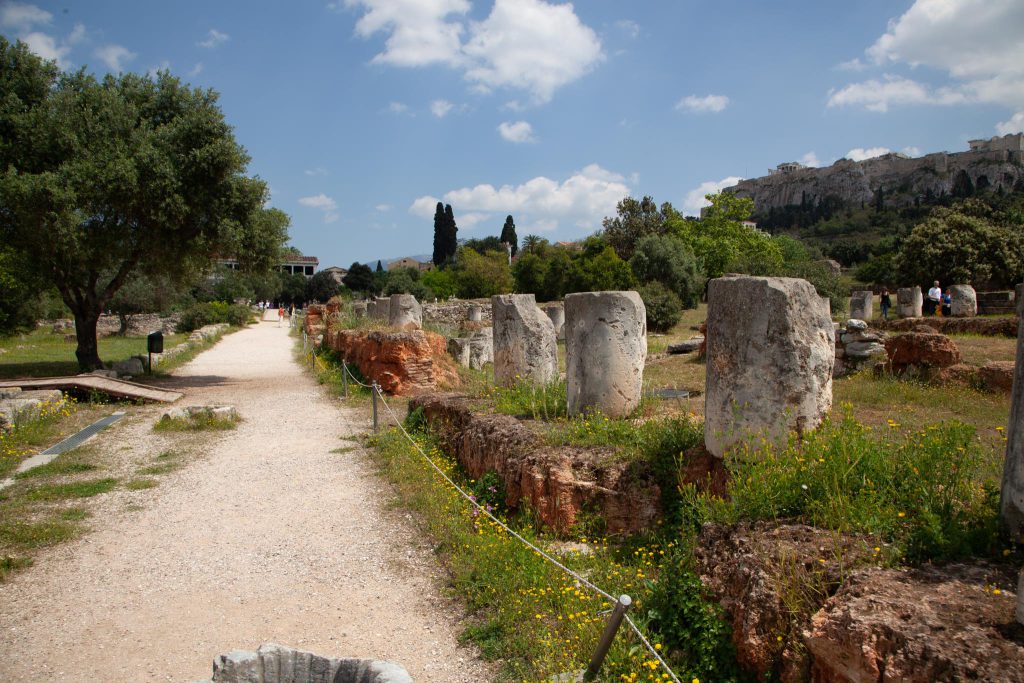The Agora of Athens today is an archaeological site located beneath the northwest slope of the Acropolis. The word “agora” applies to an assembly of people and by extend marks the gathering place. In modern Greek the term means “marketplace”.
Just about every ancient and modern city includes a place for an agora, and the Agora of Athens, being located at the heart of the city, remained in use either as an assembly, as a commercial, or as a residential area for about 5000 years. Consequently the area has undergone countless building, destruction, and rebuilding cycles. Today this strata of history has been distilled through excavations to expose the Agora’s important functions from Archaic to Greco-Roman and Byzantine times.
A stoa, in ancient Greek architecture, is a covered walkway or portico, commonly for public use, since this was the way how Stoics gathered, taught and discussed their philosophy. Early stoas were open at the entrance with columns, usually of the Doric order, lining the side of the building; they created a safe, enveloping, protective atmosphere.

















